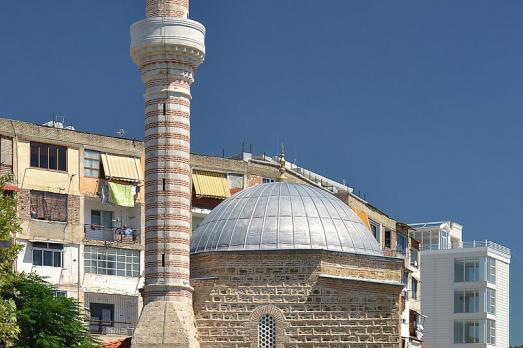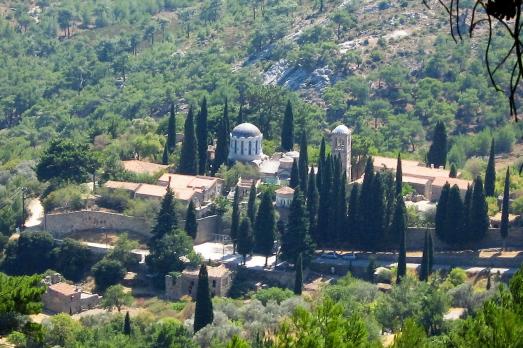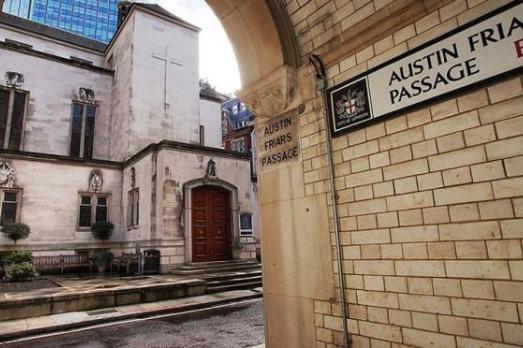
Naziresha Mosque
Elbasan, AL
Built in the 16 century, the mosque was partially (its minaret balcony and roof) damaged in 1920 due to an earthquake.
Here you can search for a building to visit. You can use the map find destinations, or you can use the filters to search for a building based upon what different criteria.

Elbasan, AL
Built in the 16 century, the mosque was partially (its minaret balcony and roof) damaged in 1920 due to an earthquake.

Chios, GR
The Nea Moní Monastery is a complex from the Byzantine period that has been on the UNESCO World Heritage List since 1990. It was founded in the 11th century, at the time of Emperor Constantine IX Monomachos. Mosaics decorate the walls and ceilings, part of the dome, the nave and the sanctuary. They are made of natural stone and glass. The monastery suffered a major earthquake in 1881, which caused the collapse of the dome and restoration has been only partial to date.
Rotterdam, NL
Modern church without tower, built as Christian Reformed Church. On December 31, 2012, the church community merged with the Reformed Church of Rotterdam-South. Since then, this combination has been called the Cooperation Community of Rotterdam-South. Since 2012, a collaboration with the Reformed Church of Rotterdam-South.
s-Gravenhage, NL
New Christian Reformed Church (CGK) with tower in The Hague-Moerwijk.
Sliedrecht, NL
Modern church without tower. Built as Reformed Church (Liberated), after merger in 2023 NGK. Replaced an older, demolished church building .
Dalfsen, NL
Modern church with bell tower.
Sleeuwijk, NL
Beautiful wooden reconstruction church, with small roof turret, in which 1 bell. The Ichtus chapel in Sleeuwijk has been demolished to make way for two detached houses. The plots of over 900 square meters have recently been for sale. (March 20, 2023)
Loosdrecht, NL
Hall church without tower in neoclassical forms. Built as Reformed Church. In 1945 Reformed Church (Liberated). Now Dutch Reformed Church.

City of London, GB
The Dutch Church is a reformed church in the Broad Street Ward, in the City of London. Located on the site of the 13th century Augustinian friary, the original building granted to Protestant refugees for their church services in 1550 was destroyed during the London Blitz. The present church was built between 1950 and 1954. With the founding of the church dating to 1550, it is the oldest Dutch language Protestant church in the world.
Harderwijk, NL
Beautiful interbellum church with roof turret. Also services of the Mennonite Community and Seventh-day Adventists.

new
The Chassidic Route is a cultural and historical trail tracing the rich legacy of Jewish communities in southeastern Poland and western Ukraine. This region was central to the rise of Chassidism in the 18th century. Here, we highlight 10 remarkable synagogues you’ll discover along this route.

he cradle of the Industrial Revolution in Germany, Chemnitz, is well-known for its industrial heritage landscape, but the city is also home to remarkable examples of religious architecture from different historical periods. Join us as we explore the key landmarks of this European Capital of Culture 2025.

The twin towns of Nova Gorica (Slovenia) and Gorizia (Italy), lying on the border between the two countries, have a rich religious heritage, steeped in centuries of tradition. If you are looking for ideas for your visit, take note of these 10 religious sites that you should not miss.